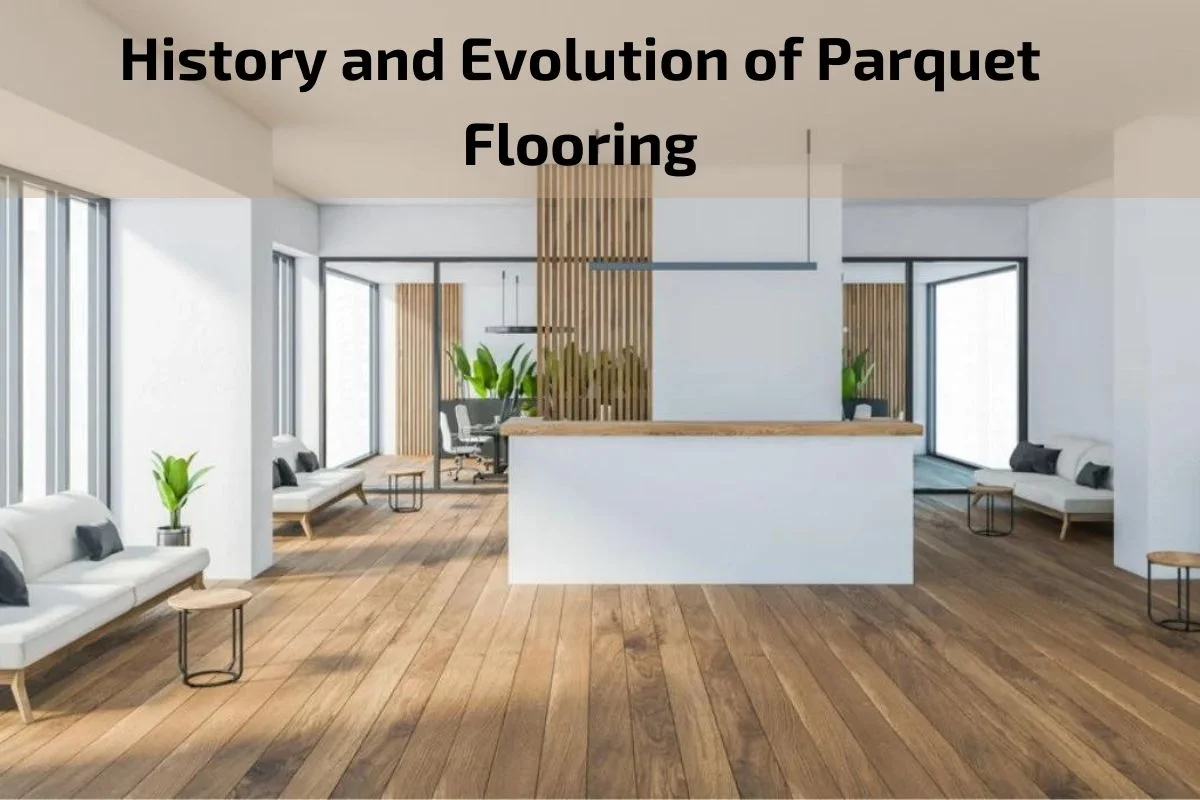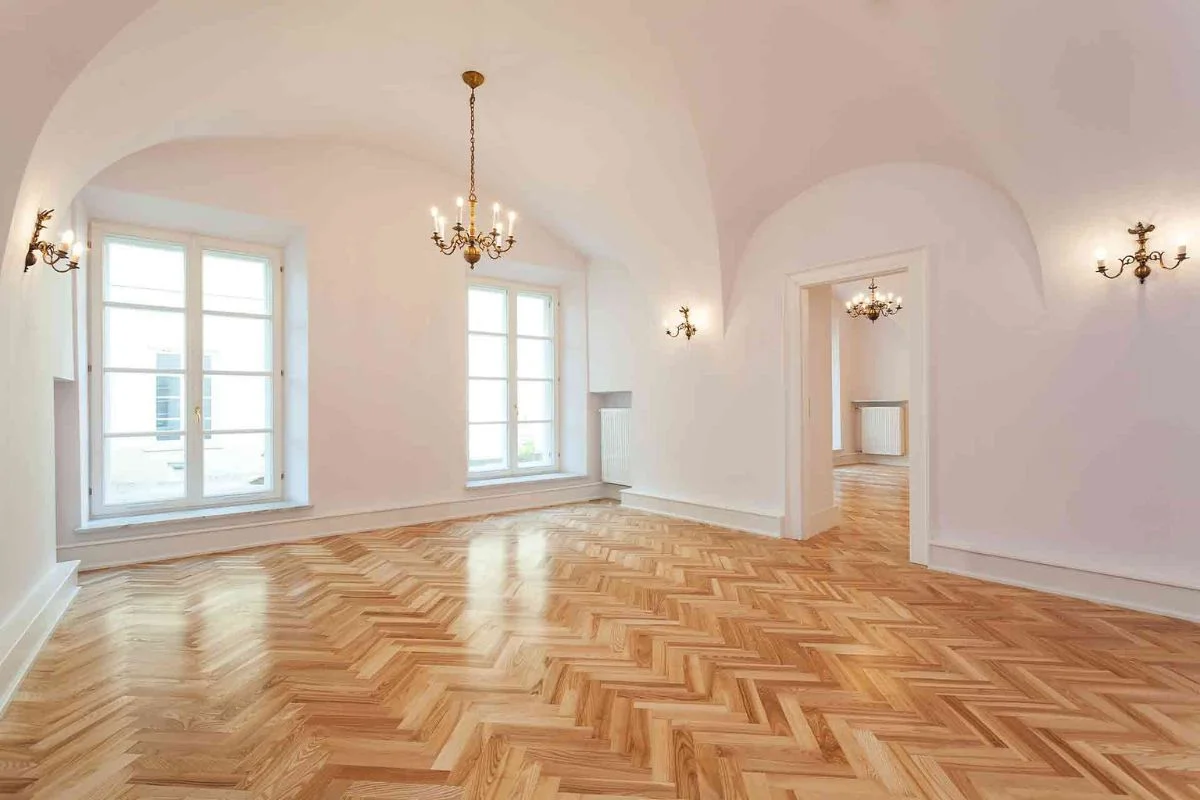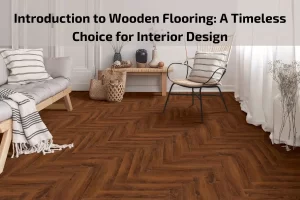Parquet flooring stands as a testament to the enduring elegance and timeless appeal of wooden flooring. Its history is rich, tracing back centuries to noble residences and regal palaces. The evolution of parquet flooring reflects not only advancements in craftsmanship but also shifting architectural and design preferences throughout different eras.
From its origins in the grandiose halls of European aristocracy to its modern-day adaptation in contemporary homes and commercial spaces, the journey of parquet flooring is a fascinating exploration of craftsmanship, artistry, and enduring style. In this article, we delve into the captivating history and evolution of parquet flooring, tracing its roots, exploring notable milestones, and understanding its significance in the realm of interior design and architectural heritage.
Definition and Overview of Parquet Flooring
Parquet flooring is a distinctive style of wooden flooring characterized by its intricate patterns and geometric designs. Derived from the French word “parquetries,” which refers to the art of inlaying wood to create decorative patterns, parquet flooring has a long and esteemed history dating back to the 17th century.
Composition: Parquet flooring is composed of small wooden pieces, known as parquet tiles or blocks, which are arranged in various patterns such as herringbone, chevron, basket weave, and Versailles.
Materials: Traditionally, parquet flooring was crafted from hardwoods like oak, walnut, maple, and cherry due to their durability and aesthetic appeal. However, modern parquet flooring may also incorporate engineered wood and laminate materials for cost-effectiveness and versatility.
Patterns: One of the defining features of parquet flooring is its intricate patterns and designs, which can range from classic and timeless to contemporary and bold. These patterns add visual interest and depth to interior spaces, enhancing their overall aesthetic appeal.
Installation: Parquet flooring installation requires precision and expertise due to the intricate nature of the patterns. It can be installed using different techniques such as glue-down, nail-down, or floating installation methods, depending on the subfloor and design preferences.
Versatility: Parquet flooring is highly versatile and suitable for various interior settings, including residential homes, commercial spaces, and historic buildings. It adds warmth, character, and sophistication to any room, making it a popular choice among homeowners and designers alike.
Durability: When properly maintained, parquet flooring is known for its durability and longevity, making it a worthwhile investment for homeowners seeking a long-lasting flooring option.
Types and Patterns of Parquet Flooring
Parquet flooring is renowned for its diverse array of patterns and styles, each adding its own unique charm and character to interior spaces. Here, we explore some of the most popular types and patterns of parquet flooring:
Herringbone Pattern:
The herringbone pattern is perhaps the most iconic and timeless design in parquet flooring. It features rectangular blocks arranged in a staggered zigzag pattern, creating a visually striking effect that adds depth and dimension to any room.
Chevron Pattern:
Similar to the herringbone pattern, the chevron pattern features blocks arranged in a V-shaped formation. Unlike herringbone, chevron blocks are cut at precise angles to create a continuous zigzag pattern that imparts a sense of movement and elegance to the space.
Basket weave Pattern:
The basket weave pattern consists of square blocks arranged in a woven pattern, resembling the look of a traditional basket. This classic pattern adds a touch of texture and visual interest to floors, creating a cozy and inviting atmosphere.
Versailles Pattern:
The Versailles pattern is inspired by the grandeur of 17th-century French palaces. It features large, square tiles arranged in a geometric layout with intricate borders and accents. This opulent pattern exudes sophistication and luxury, making it a popular choice for upscale interiors.
Brick Bond Pattern:
The brick bond pattern, also known as the running bond pattern, mimics the arrangement of bricks in a traditional brick wall. Blocks are laid in a staggered formation, creating a linear and cohesive look that suits both modern and traditional spaces.
Diagonal Pattern:
The diagonal pattern involves laying parquet blocks at a 45-degree angle to the walls, creating a dynamic and visually appealing effect. This pattern adds a sense of movement and flow to the room, making it appear more spacious and open.
Custom Patterns:
In addition to traditional patterns, custom designs and patterns can be created to suit individual tastes and preferences. From geometric motifs to intricate inlays and borders, custom parquet flooring allows for endless creative possibilities.
Advantages and Disadvantages of Parquet Flooring
Parquet flooring offers a range of benefits and drawbacks that should be considered when selecting flooring options for residential or commercial spaces. Below, we outline the advantages and disadvantages of parquet flooring:
Advantages:
Elegant Aesthetic: Parquet flooring adds a touch of elegance and sophistication to any interior space, enhancing its visual appeal and overall ambiance.
Versatile Design Options: With a variety of patterns, colors, and wood species available, parquet flooring offers endless design possibilities to suit diverse tastes and preferences.
Durability: High-quality parquet flooring, when properly maintained, can last for decades, making it a long-term investment for homeowners.
Easy Maintenance: Parquet flooring is relatively easy to clean and maintain compared to other flooring options. Regular sweeping and occasional polishing can keep it looking fresh and vibrant.
Warmth and Comfort: Wood flooring provides natural warmth underfoot, creating a cozy and inviting atmosphere in residential and commercial settings.
Increases Property Value: Parquet flooring is considered a premium flooring option and can increase the resale value of a property due to its durability and aesthetic appeal.
Disadvantages:
Cost: Parquet flooring tends to be more expensive than other flooring options, particularly solid hardwood flooring. The intricate patterns and craftsmanship involved in its installation contribute to its higher cost.
Susceptibility to Moisture Damage: Wood flooring, including parquet, is susceptible to moisture damage if exposed to excessive humidity or water spills. Proper sealing and maintenance are essential to prevent warping, swelling, or cupping of the wood.
Requires Professional Installation: Installing parquet flooring requires skill and expertise, especially when intricate patterns or custom designs are involved. Professional installation is recommended to ensure proper alignment and a flawless finish.
Prone to Scratches and Dents: Like all wood flooring, parquet is susceptible to scratches, dents, and wear over time, particularly in high-traffic areas. Area rugs and furniture pads can help minimize damage and prolong the lifespan of the flooring.
Limited Compatibility with Underfloor Heating: Some types of parquet flooring may not be compatible with underfloor heating systems, limiting their suitability for certain environments.
Installation Process of Parquet Flooring
Installing parquet flooring requires precision, attention to detail, and skilled craftsmanship to achieve a flawless finish. Here’s an overview of the typical installation process:
Preparation of Subfloor:
Before installation, the subfloor must be clean, dry, level, and free of any debris or imperfections. Subfloor preparation may involve sanding, leveling, and applying moisture barriers as necessary.
Acclimation of Parquet Tiles:
Parquet tiles should be acclimated to the room’s temperature and humidity levels for at least 48 hours before installation. This allows the wood to adjust to its new environment and minimize the risk of expansion or contraction after installation.
Layout and Planning:
Careful planning and layout are crucial to achieving a uniform and aesthetically pleasing result. The installer determines the starting point, layout pattern, and orientation of the parquet tiles based on the room’s dimensions and architectural features.
Adhesive Application:
Depending on the installation method, a suitable adhesive is applied to the subfloor using a trowel or roller. The adhesive should be spread evenly to ensure proper bonding between the subfloor and parquet tiles.
Installation of Parquet Tiles:
Parquet tiles are laid according to the predetermined layout and pattern, starting from the center of the room and working outward. Each tile is carefully placed and pressed firmly into the adhesive to ensure a secure bond.
Cutting and Trimming:
Inevitably, some tiles will need to be cut or trimmed to fit around corners, doorways, or obstacles. A saw or specialized cutting tool is used to achieve precise cuts and ensure a seamless transition between tiles.
Grouting (Optional):
Depending on the installation method and design preferences, grout may be applied between the parquet tiles to fill in gaps and create a uniform surface. Grout color can be matched to the wood or chosen to contrast for decorative effect.
Finishing Touches:
Once the parquet tiles are installed, any excess adhesive or grout is cleaned off the surface, and the floor is left to cure for the recommended period. The installer may then apply a protective finish, such as polyurethane or wax, to enhance the durability and appearance of the flooring.
Final Inspection:
After installation, the flooring is inspected for any imperfections or inconsistencies. Any necessary touch-ups or adjustments are made to ensure a flawless finish and customer satisfaction.
Maintenance Tips for Parquet Flooring
Parquet flooring is a beautiful and timeless addition to any home or commercial space, but it requires proper care and maintenance to preserve its natural beauty and durability. Here are some essential maintenance tips for parquet flooring:
Regular Cleaning:
Sweep or vacuum the floor regularly to remove dust, dirt, and debris. Use a soft-bristled broom or vacuum attachment to prevent scratching the surface of the wood.
Damp Mopping:
Periodically damp mop the floor using a well-wrung mop and a mild hardwood floor cleaner. Avoid using excess water, as standing moisture can damage the wood. Immediately wipe up any spills or excess liquid to prevent staining and warping.
Avoid Harsh Chemicals:
Avoid using harsh detergents, ammonia-based cleaners, or abrasive cleaning agents on parquet flooring, as they can damage the finish and dull the wood’s appearance. Stick to gentle, pH-neutral cleaners specifically formulated for hardwood floors.
Protective Mats and Rugs:
Place mats or area rugs at entryways, high-traffic areas, and under furniture to prevent dirt, grit, and moisture from being tracked onto the floor. Use felt pads or coasters under furniture legs to prevent scratches and dents.
Minimize Sun Exposure:
Limit direct exposure to sunlight, as prolonged UV exposure can cause fading and discoloration of the wood. Use curtains, blinds, or UV-protective window film to filter sunlight and protect the flooring.
Maintain Humidity Levels:
Maintain consistent humidity levels in the indoor environment to prevent excessive expansion or contraction of the wood. Use a humidifier during dry winter months and a dehumidifier in humid climates to keep humidity levels within the recommended range (ideally between 35% and 55%).
Routine Maintenance:
Inspect the flooring regularly for signs of wear, scratches, or damage. Promptly address any issues by sanding, refinishing, or repairing damaged areas to prevent further deterioration.
Protective Finish:
Consider applying a protective finish, such as polyurethane or wax, to the surface of the flooring to enhance its durability and resistance to stains, scratches, and moisture. Follow the manufacturer’s recommendations for application and maintenance of the finish.
Professional Maintenance:
Periodically assess the condition of the flooring and consider hiring a professional hardwood floor maintenance service to deep clean, refinish, or restore the flooring as needed. Professional maintenance can help prolong the lifespan of parquet flooring and keep it looking its best for years to come.
conclusion
In conclusion, parquet flooring offers a classic and elegant option for enhancing the beauty and functionality of any space. Its intricate patterns, rich textures, and natural warmth add a touch of sophistication to residential and commercial interiors alike.







